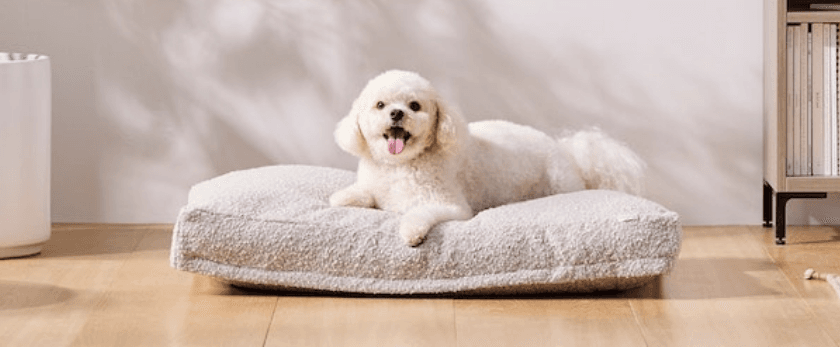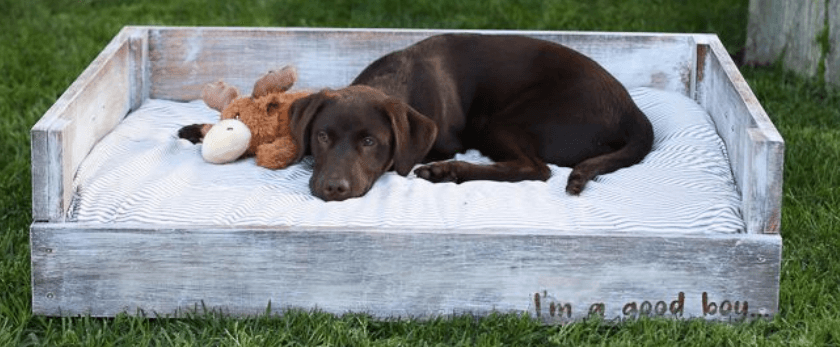As pet owners, we want the best for our beloved companions. We buy them the best food, toys, and accessories to keep them happy and healthy. However, have you ever stopped to think about the environmental impact of these products? From the materials used to make them to the way they are disposed of, our pets' belongings can have a significant impact on the planet.
But don't worry, there is a simple solution – homemade pet beds. Not only are they better for the environment, but they can also be a fun and creative project for you and your furry friend. In this article, we will discuss why store-bought pet beds are bad for the environment, the benefits of making your own, and provide step-by-step instructions on how to make your own eco-friendly pet bed.
Why Store-Bought Pet Beds are Bad for the Environment
- Made from Non-Sustainable Materials
Most store-bought pet beds are made from synthetic materials such as polyester, nylon, and polyurethane foam. These materials are derived from non-renewable resources and require a significant amount of energy to produce. Additionally, the production of these materials releases harmful chemicals and greenhouse gases into the environment.
- Not Biodegradable
When your pet's bed reaches the end of its life, it will most likely end up in a landfill. Unfortunately, most pet beds are not biodegradable, meaning they will sit in the landfill for hundreds of years, releasing toxic chemicals into the soil and water.
- Harmful Dyes and Chemicals
Many pet beds are also dyed with harmful chemicals that can be harmful to your pet's health and the environment. These dyes can leach into the soil and water, polluting our ecosystems.
- Constant Need for Replacement
Pet beds are not built to last, and most pet owners find themselves replacing them every few years. This constant need for replacement means more resources are being used and more waste is being produced.
Why Making Your Own is Better for the Environment
- Use Sustainable Materials
When you make your own pet bed, you have control over the materials used. You can choose sustainable options such as organic cotton, bamboo, or recycled fabrics. These materials are better for the environment as they are renewable and require less energy to produce.
- Biodegradable Options
By using natural materials, your homemade pet bed will be biodegradable, meaning it will break down naturally without releasing harmful chemicals into the environment.
- Avoid Harmful Dyes and Chemicals
When you make your own pet bed, you can choose to use natural dyes or leave the fabric undyed. This eliminates the risk of harmful chemicals leaching into the environment.
- Customizable and Durable
Homemade pet beds can be customized to fit your pet's needs and preferences. You can make them as soft or firm as your pet likes, and you can easily replace or repair any worn-out parts. This means your pet bed will last longer, reducing the need for constant replacement.

What You Will Need
- Fabric (organic cotton, bamboo, or recycled fabric)
- Sewing machine or needle and thread
- Scissors
- Measuring tape
- Stuffing material (recycled fabric, old clothes, or organic cotton)
- Optional: natural dyes, buttons, zippers, or other decorative materials
Directions
- Measure and Cut the Fabric
Measure and cut two pieces of fabric to your desired size. You can make a rectangular, circular, or any other shape that suits your pet's needs. Make sure to leave a few extra inches on each side for seam allowance.
- Sew the Fabric Together
Place the two pieces of fabric together, with the right sides facing each other. Sew around the edges, leaving a small opening for stuffing.
- Stuff the Pet Bed
Turn the fabric right side out and stuff the bed with your chosen filling material. You can use old clothes, recycled fabric, or organic cotton. Make sure to stuff it evenly and to your desired firmness.
- Sew the Opening Closed
Once the bed is stuffed, sew the opening closed. You can use a needle and thread or a sewing machine for this step.
- Optional: Add Decorative Touches
If you want to add some decorative touches to your pet bed, now is the time to do so. You can sew on buttons, add a zipper for easy cleaning, or use natural dyes to add some color.
- Let Your Pet Enjoy!
Your homemade pet bed is now ready for your furry friend to enjoy. Place it in their favorite spot and watch them snuggle up in their new eco-friendly bed.
Conclusion
Making your own pet bed is not only a fun and creative project, but it also has a positive impact on the environment. By using sustainable materials and avoiding harmful chemicals, you are reducing your pet's carbon pawprint and contributing to a greener, more eco-friendly future. So next time your pet's bed needs replacing, consider making your own and give your furry friend a comfortable and sustainable place to rest.










